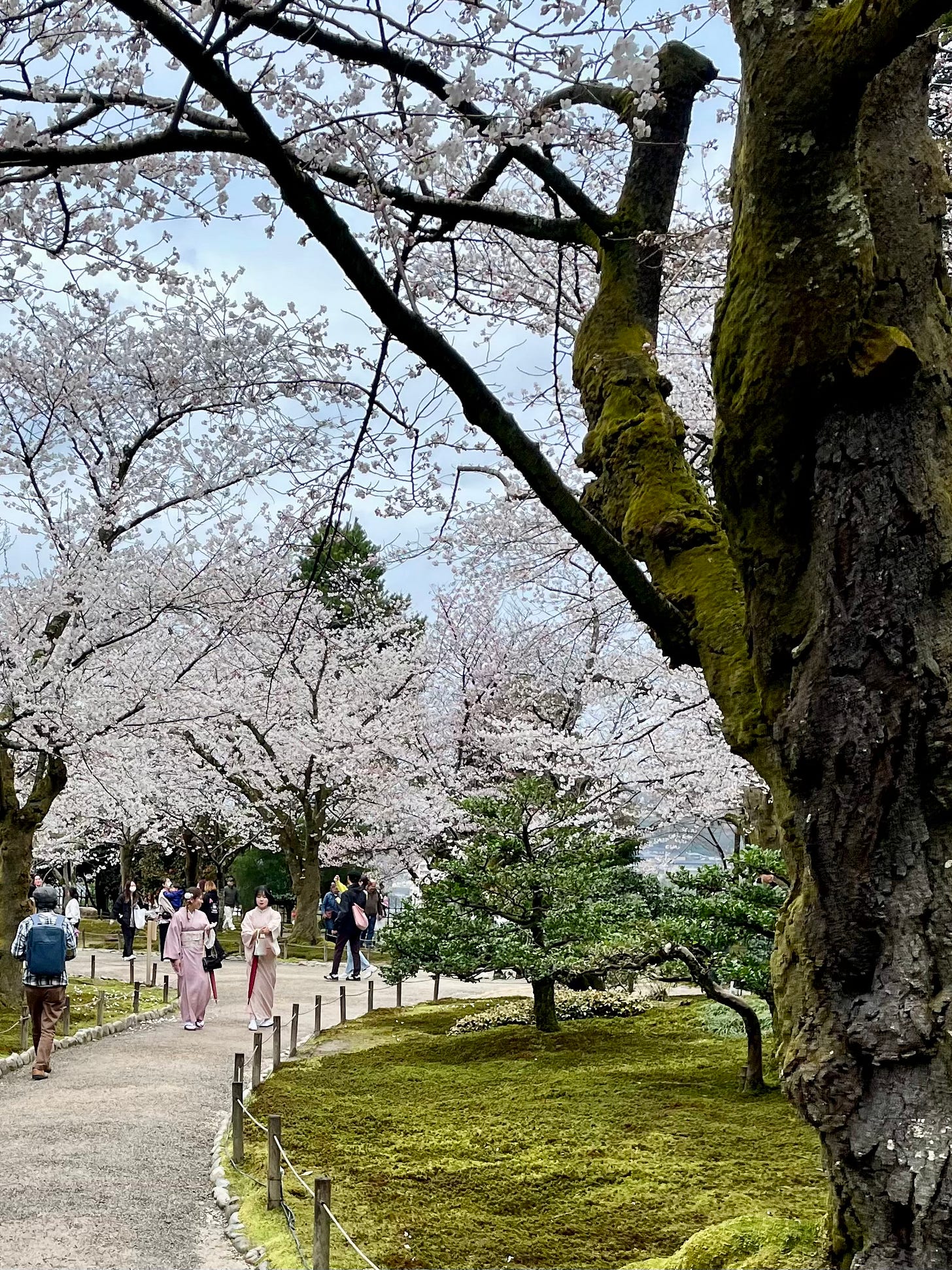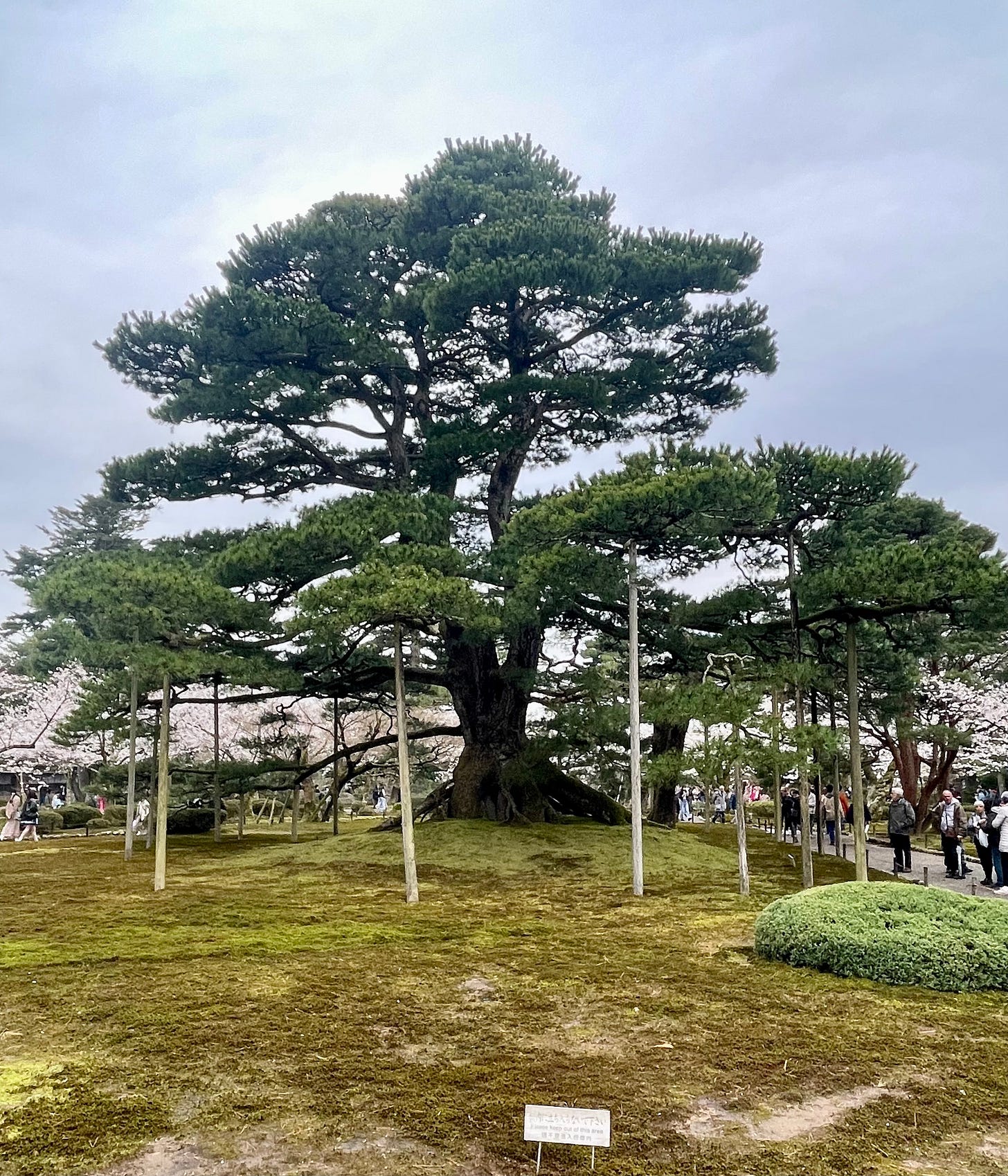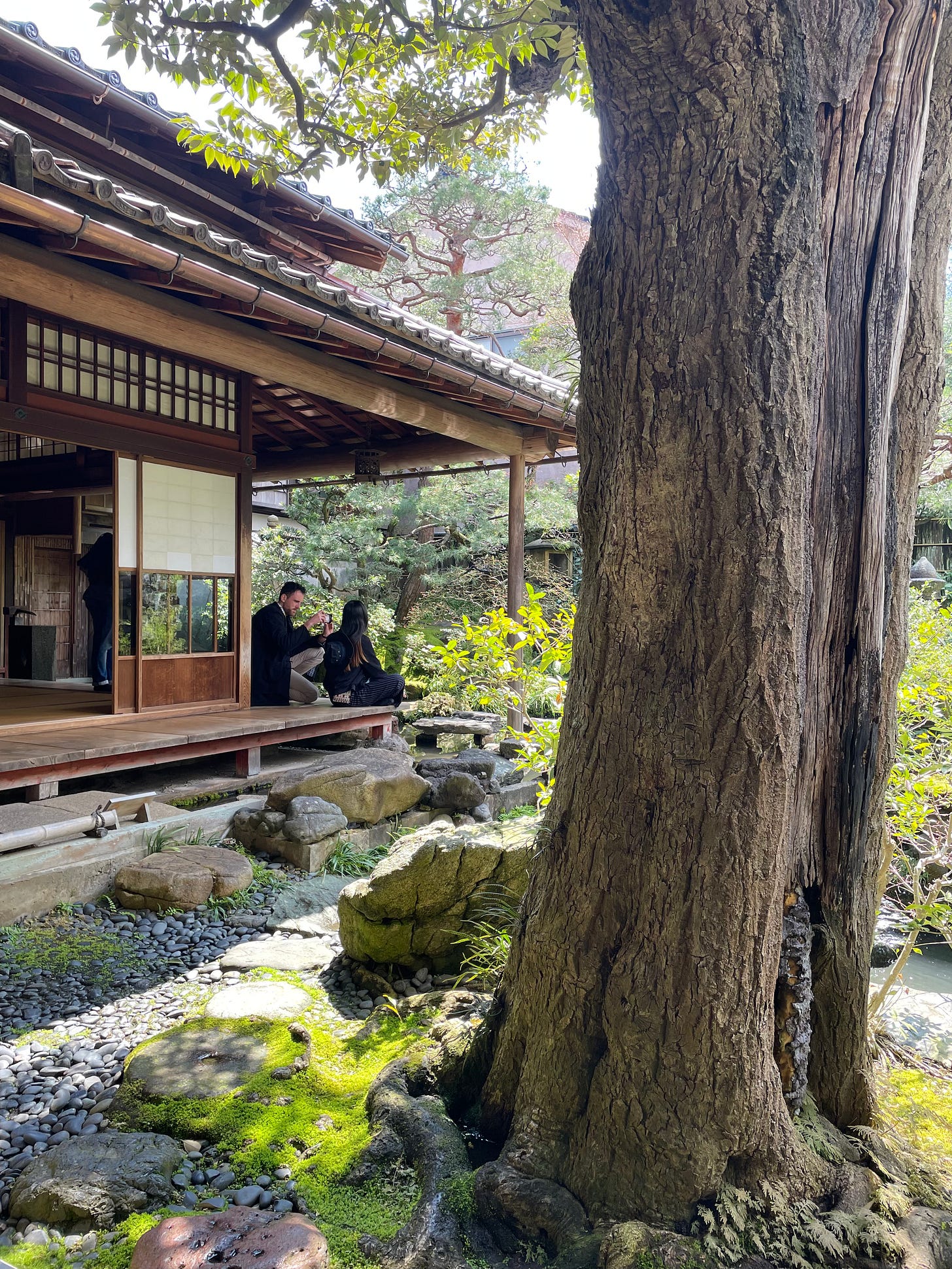The cherry blossoms were just opening in Kenrokuen Garden in Kanazawa, Japan when I visited in April. Kenrokuen is said to be one of the three most beautiful gardens in Japan.1 Ancient trees fill the park. Clouds of blossoms float along walkways and brooks. People stroll, gathering in clusters and aiming their phones at particularly beautiful masses, a striking branch, or a single blossom before it blows away.
On the Sunday of my visit, the gray sky blended with the pink sakura. Mosses softened the ground and glossy leaves glistened with dew. Brooks meandered; the sound of running water was everywhere.
Women in kimono walked the paths, their pink garments echoing the blossoms.
Ancient trees thrive here, propped up by whatever support they might need. No tree is left behind.
Landscapers tend to the moss beneath a be-crutched oldster.
Another survivor stands on its own roots, snug in their moss blanket.
The nearby Kanazawa Castle is draped with blossoms.
Across town in the Nagamachi district, the garden of the Nomura Samurai House provides a respite from the expanse and crowds at Kenrokuen. Koi have swum the constrained waterways since the 16th century.
Ferns grow in root nooks, and moss snuggles the ground.
A couple chats beneath the eaves.
And inside, there’s a note to Mr. Nomura Shichirogoro.
October 9, 1566
We appreciate that you worked so hard to kill one high ranked soldier on the fourth of last month at the Yokokitaguchi Battle in Kaganokuni Enumagun.
We are very happy you brought us his head.
—Nomura Samurai House, Nagamachi, Kanazawa, Japan
I try to reconcile the koi in the pond with the head in the hand of the samurai. I can’t. All I can do is sigh. People.
Shortly after my visit I read the following about the rise of the samurai, from Christopher Harding’s Substack IlluminAsia:2
Something was clearly changing in Japan. Before this era, fighting had been left to the unfortunate and often inept conscripts of the Imperial Army. Now, you could make a name for yourself and your family through valiant deeds on horseback or in hand-to-hand combat. Aristocratic Japan, delighting in painting, poetry and fashion, would have regarded ‘martial arts’ as an oxymoron - a nonsensical combining of terms. No longer.
There it is: the easy human tendency to blend beauty with savagery, stir chaos into calm. It wasn’t a new recipe in 1566, nor was Japan exceptional. Pharoahs did a lot of enemy smiting and then memorialized their achievements in beautiful tomb decorations.3 Alexander was ‘Great’ because he conquered vast territories, from Macedonia to Egypt to India, and quite violently, too (his conquests included those smiting Pharoahs).
People and power. The eternal push-me-pull-you of beauty against aggression.
People in New York City walk slowly down a sidewalk, right down the middle, on the phone, talking loudly, in my way. All the time.
Here in Queens it seems that a thousand languages are spoken and two thousand cuisines are served,4 and that’s fabulous, but rude is rude no matter how you say it or serve it. So I was ready to edge past the man in the middle of the sidewalk talking loudly on his phone with a curt “excuse me,” and make him feel a little, just a little, sheepish.
I came up behind him and, because his phone was on speaker (!), I could hear the question being posed to my sidewalk nemesis.
“How much should we send? They need as much as we can spare. Everything was destroyed.”
His answer: “Send them the money we were going to spend this summer. We can find something cheaper to do for vacation.”
I dropped back and decided to not push past him, to let him finish figuring this out. “They” needed his help more than I needed to get past him.
Text (except for IlluminAsia quote) and photos © 2025 Kevin Callahan














I'm really intrigued with this idea of beauty and horror being brought together through time, Kevin. It seems like the whole of human existence has been some kind of fusion between the sacred (the koi pond) and the profane (the severed head of the samurai). How do we reconcile the two? Or do we even need to? Or is the reconciliation seen in such texts as poetry?
Thanks, Kevin! I enjoyed the article and the photographs.